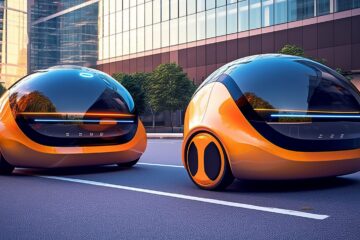Industries all around are looking at creative methods to lower their carbon footprints at a time of increased environmental consciousness and urgency around climate change. One such development is the acceptance of electric tugs, which are progressively used in many fields. These electrically driven vehicles not only improve the running economy but also help greatly to reduce greenhouse gas emissions. The many industries using electric tugs, as well as their benefits in lowering carbon footprints, are explored in this article.
The Rise of Electric Tugs
Considered small, high-powered towing vehicles, electric tugs are becoming more and more popular as environmentally acceptable substitutes for diesel-powered ones. Depending on sophisticated battery technology, electric tugs run silently and cleanly, unlike conventional tugs that discharge dangerous pollutants.
These tugs have grown more efficient, affordable, and competent at tackling a range of pulling tasks with recent developments in energy storage and electric propulsion. For busy environments, its design also allows for speedy recharging and minimum downtime. Electric tugs stand out as a sensible option as sectors give sustainability first priority as they encourage better operations without sacrificing performance or power.
Maritime Industry: Setting Sail Towards Sustainability
One of the first industries to use electric tugs in line with its environmental policy has been marine ones. Electric tugs are being used by ports all over to help with ships maneuvering inside harbors. Ports greatly lower emissions during important operations by substituting electric alternatives for diesel-powered tugs.
Along with reducing the carbon impact, this change enhances port city air quality, therefore helping the nearby populations. Further reducing their environmental effect is electric tugs’ ability to run on renewable energy sources. To run electric charging stations for tugs, some ports are funding solar panels and wind turbines, therefore fostering a very sustainable ecosystem. The marine sector is leading the pace as demand for greener methods rises, demonstrating how electric tugs may revolutionise operations.
Logistics and Warehousing: Streamlining Operations
Electric tugs are transforming cargo handling in the transportation and warehouse industries. Electric tugs are being used by companies moving heavy loads throughout industrial facilities, distribution hubs, and warehouses, among other locations. These tugs cut the time and energy needed to move products, therefore improving efficiency.
Furthermore, the use of electric tugs reduces dependency on forklifts and other machinery, causing noise and pollution. Including electric tugs into business operations not only lowers carbon footprints but also improves workplace safety and employee well-being as businesses aim toward sustainability. Electric tugs are the perfect answer for interior material handling as they can run in confined areas without emitting pollutants.
Airports: Transforming Ground Support
An Electric aircraft tug is also becoming useful in the aviation industry. These trucks are being used extensively by airports for ground support operations like luggage transportation and aircraft towing. Given aviation’s major contribution to world greenhouse gas emissions, the switch from diesel to electric tugs fits the industry’s environmental commitment.
In airport operations, electric tugs have several benefits. They run silently, therefore lowering noise levels for surrounding areas and improving the travel experience for visitors. Electric tugs also need less maintenance than conventional tugs, which saves airport expenses. Using electric tugs helps airports not only lower their carbon footprint but also provide a model for environmentally friendly aviation activities.
Construction Sites: Reducing Emissions on Job Sites
Another industry where electric tugs have a noticeable influence is construction. Moving tools, equipment, and heavy goods is common on building sites. These loads may be efficiently transported by electric tugs, therefore reducing diesel-powered vehicle emissions. Moreover, electric tugs provide a better working environment by means of safety.
Their silent running helps to lower noise levels on building sites, therefore facilitating worker communication and job concentration. As more building enterprises pledge to sustainability, electric tugs provide a practical way to lower emissions on job sites and boost output.
Conclusion
Electric tugs turn out to be a great answer as businesses all around look for creative methods to lower their carbon footprints. Their adaptability and efficiency fit many industries, including marine, logistics, aviation, and building. Adopting electric tugs helps businesses not only reduce their environmental effect but also support sustainable practices that enhance their operations and local areas.
Keep an eye for more news & updates on Tribune Tribune!




